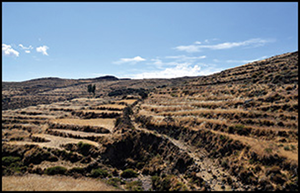Article contents
Beyond Inca roads: archaeological mobilities from the high Andes to the Pacific in southern Peru
Published online by Cambridge University Press: 13 December 2022
Abstract

The Andes offers a particularly effective focus for an archaeology of mobility because their extreme topography compresses enormous vertical resource diversity across short horizontal distances. In this article, the authors combine findings from two large-scale archaeological studies of adjacent watersheds—the Nasca-Palpa Project and One River Project—to provide the necessary context in which to explore changing mobilities from the Archaic Period to the Inca Empire, and from the Pacific coast to the high Andes. Analyses of obsidian lithics and stable isotopes in human hair are used to argue that changing patterns of mobility offer a new way of defining the ‘Horizons’ that have long dominated concepts of periodisation here.
- Type
- Research Article
- Information
- Copyright
- Copyright © The Author(s), 2022. Published by Cambridge University Press on behalf of Antiquity Publications Ltd
References
- 5
- Cited by




